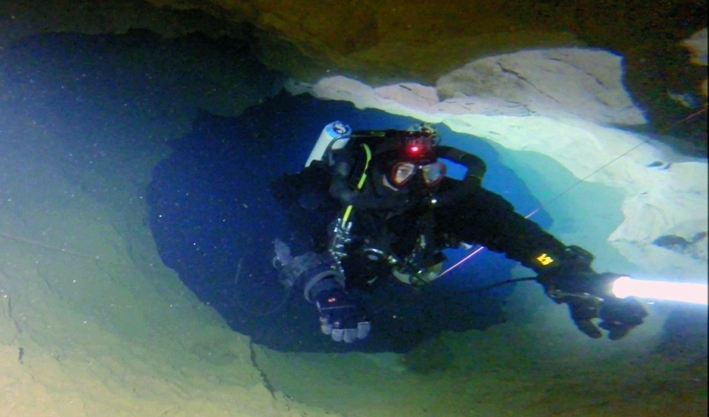Simon Nadim exploring new underground tunnels
The project of the Lebanese Cave Diving Project began in 2013 with the discovery of underwater cave of 1000m at Nabay arriving at a depth of 43m. The purpose of the Lebanese Cave Diving Project is to explore and build maps of underground caves, and to educate and train future cave divers. The project Jeita66 followed with the discovery and exploration of new underground galleries of the Jeita Grotto. There are more than 600 dry caves in Lebanon with rich prospects of discoveries. It is a new era of exploration that begins with documentation and videos in support. This project is a cooperation between Pure Tech (Simon Nadim) and Caving Club of Lebanon. Simon Nadim, professional trainer of underwater cave diving and deep diving, holder of international qualifications in this area, takes us into new unexplored depths of the Jeita Grotto.
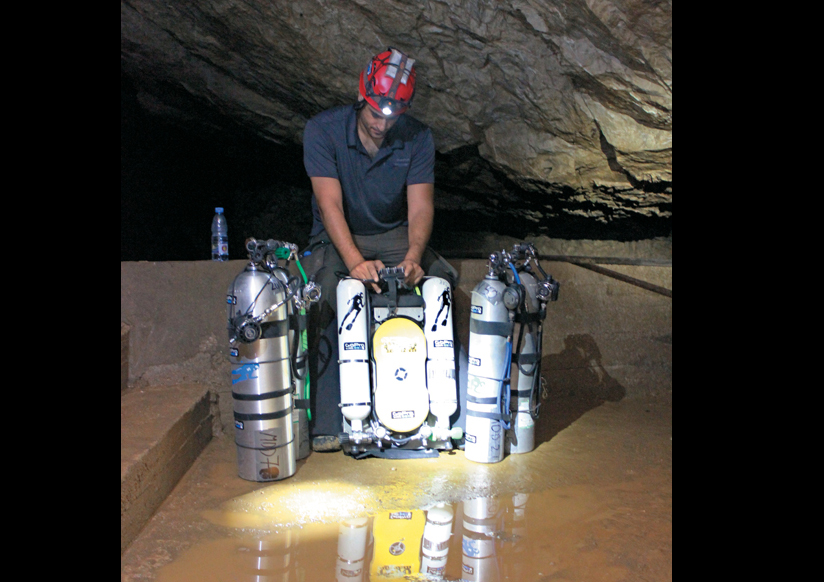
© Photos: Johnny Tawk and Charbel Aoun
Simon Nadim and the team of the Lebanese Cave Diving Project.From 1954 to 2014
Explorations of the Jeita Grotto
“The place where I dive now was discovered in 1954 by Caving Club of Lebanon expedition led by Sami Karkabi. It is a lake which is the main source of running water from the underground river of Jeita, which is 6.400m upstream of the tourist entrance of the cave. Previous explorers had done an awesome job with the equipment available, each in his time. “During the first dive in 1966 within this siphon, three divers including Sami Karkabi and two French divers have explored 120m tunnel water arriving at 24m depth. They had to carry their equipment for two days in the mazes of the cave to reach the lake. A team of sixteen people had to carry the equipment from the entrance. In 1971 and after three years of research, a tunnel of 500m was dug from the mountain leading directly to the lake to allow routing of the hardware for building a dam to regulate the water flow. “In 1975, the diver Michel Majdalani entered at a distance of 150m in the tunnel submerged, arriving at a depth of 40m. In 1993, a mission of Caving Club of Lebanon under the auspices of the Swiss diver Jean-Jacques Bolanz made four dives in the tunnel and have entered 240m distance reaching 64m deep. And no serious attempt has been undertaken.

© Photos: Johnny Tawk and Charbel Aoun
From January 2014 to October 2014 it took Simon Nadim 40 hours of diving to explore a distance of 470m and 66m depth in Jeita Grotto.
Lebanese Cave Diving Project
This vast project of exploring caves in Lebanon is a cooperation between Pure Tech (Simon Nadim) and Caving Club of Lebanon. Pure Tech is responsible for scuba diving, exploration, inspection and supply diving equipment, while the task of Caving Club of Lebanon is related to providing logistics data on land to support and to supply geological information. The exploration project Jeita66 that began in January 2014 includes two phases.
Phase 1 has been completed with the development of a map for a distance of 550m from the underground cave including the recently explored 310m to a depth of 66m. This is a project that required dives of 180 minutes to 320 minutes at a temperature of 14° C with decompression of long duration.
Phase 2 will begin when the construction of a decompression chamber will be completed and the renovation of the rail in the tunnel that leads to the start of the dive.
Simon Nadim explains: “There are several sources that feed the Jeita Grotto. The largest could come from Janna lake that has its source in Nahr Ibrahim, but these are assumptions that remain to be proven with further exploration. Scientists had made this assumption from geological studies. ”
© Lebanese Cave Diving Project / Photos: Simon Nadim


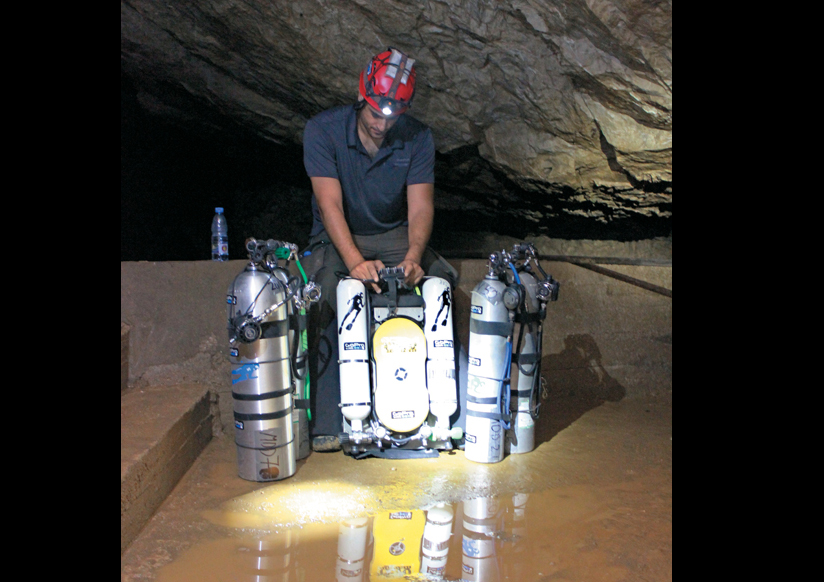
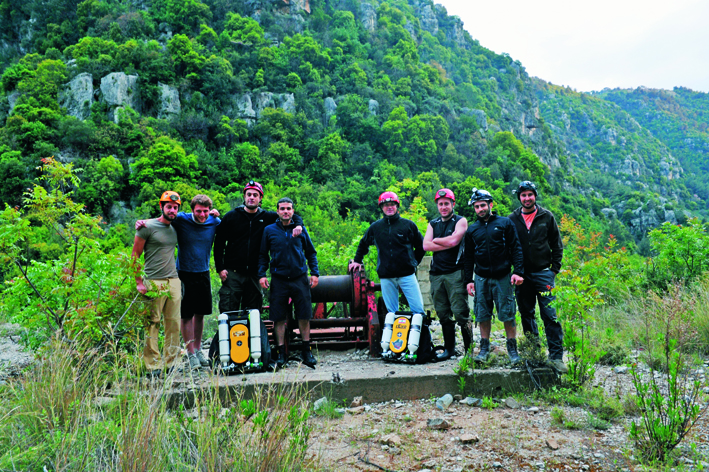
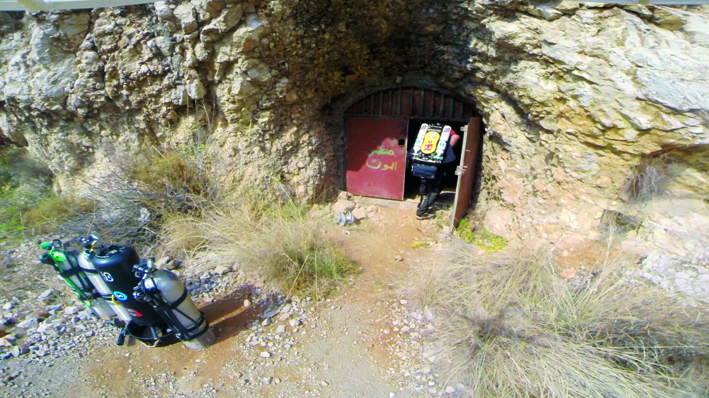
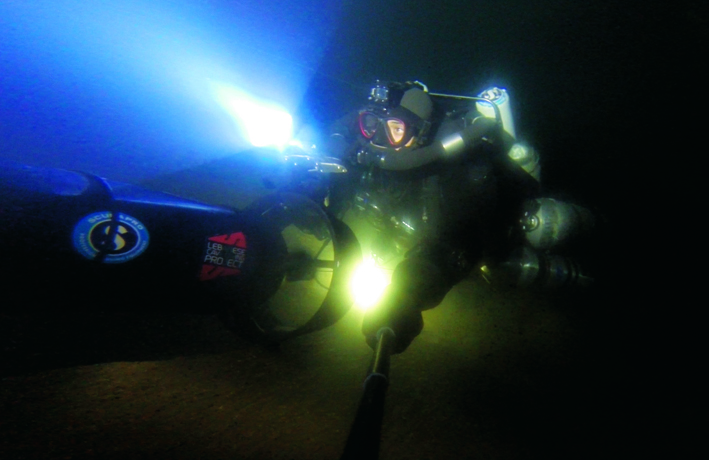
![er]ls](http://www.prestigemag.co/wp-content/uploads/2014/11/erls.jpg)
